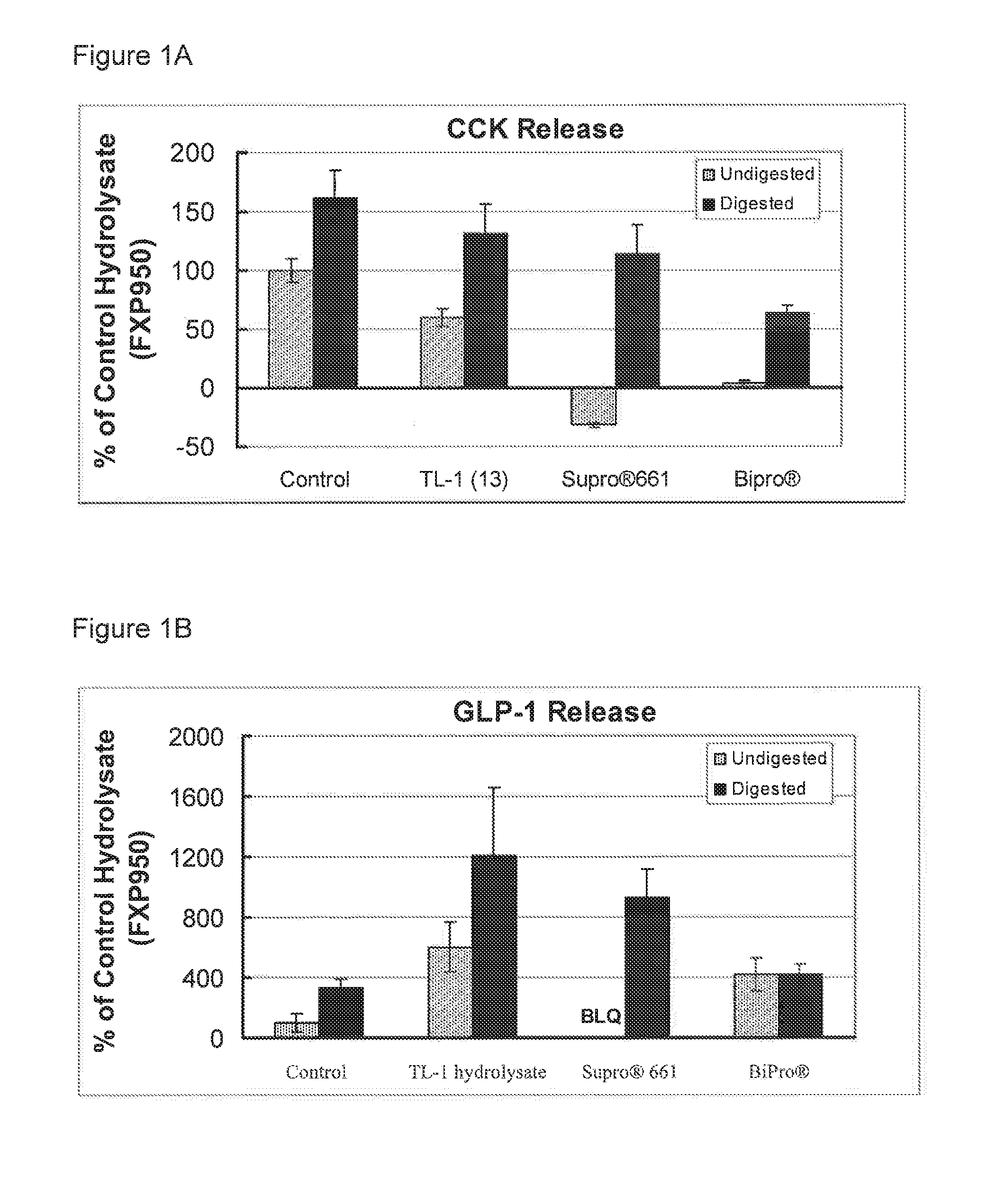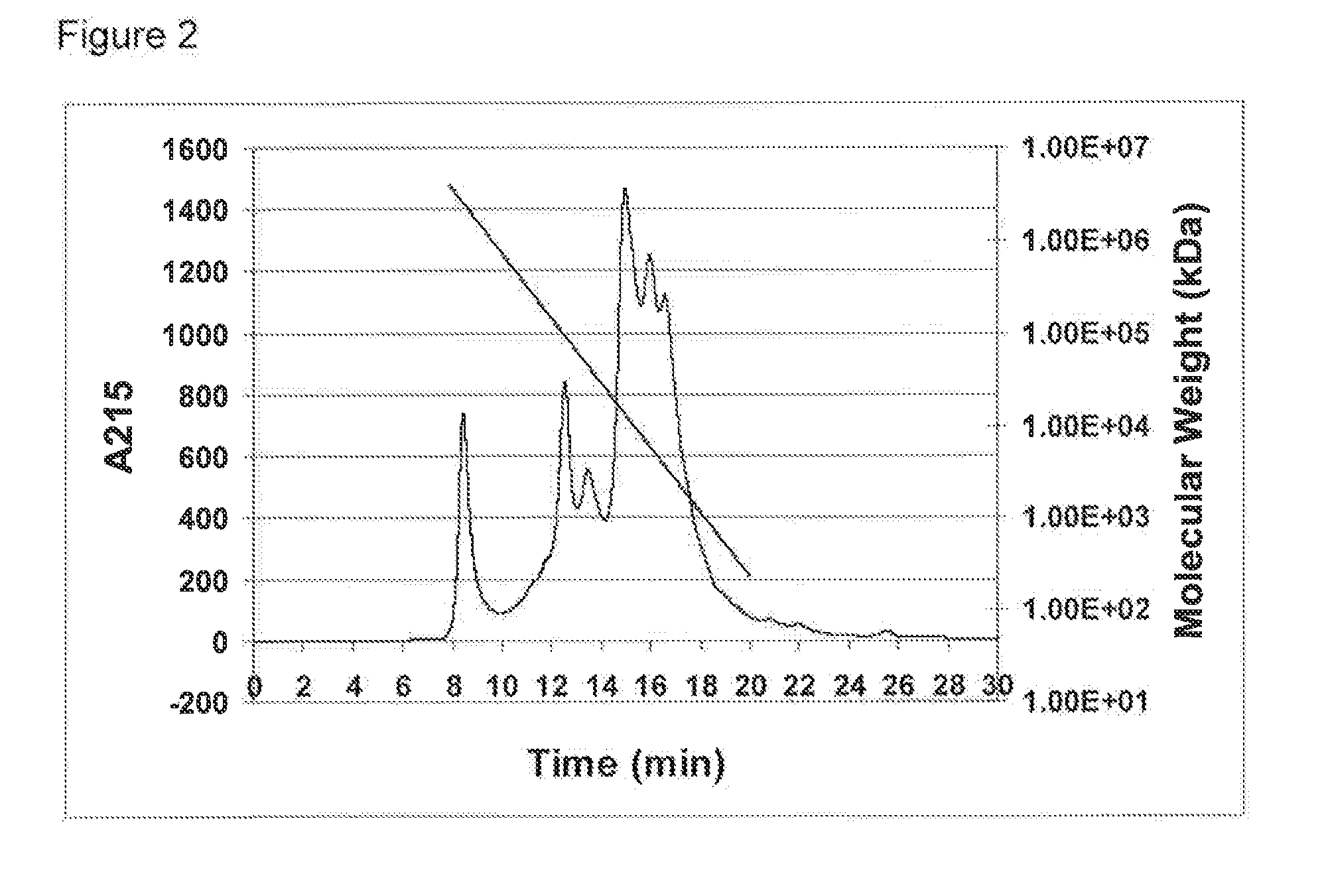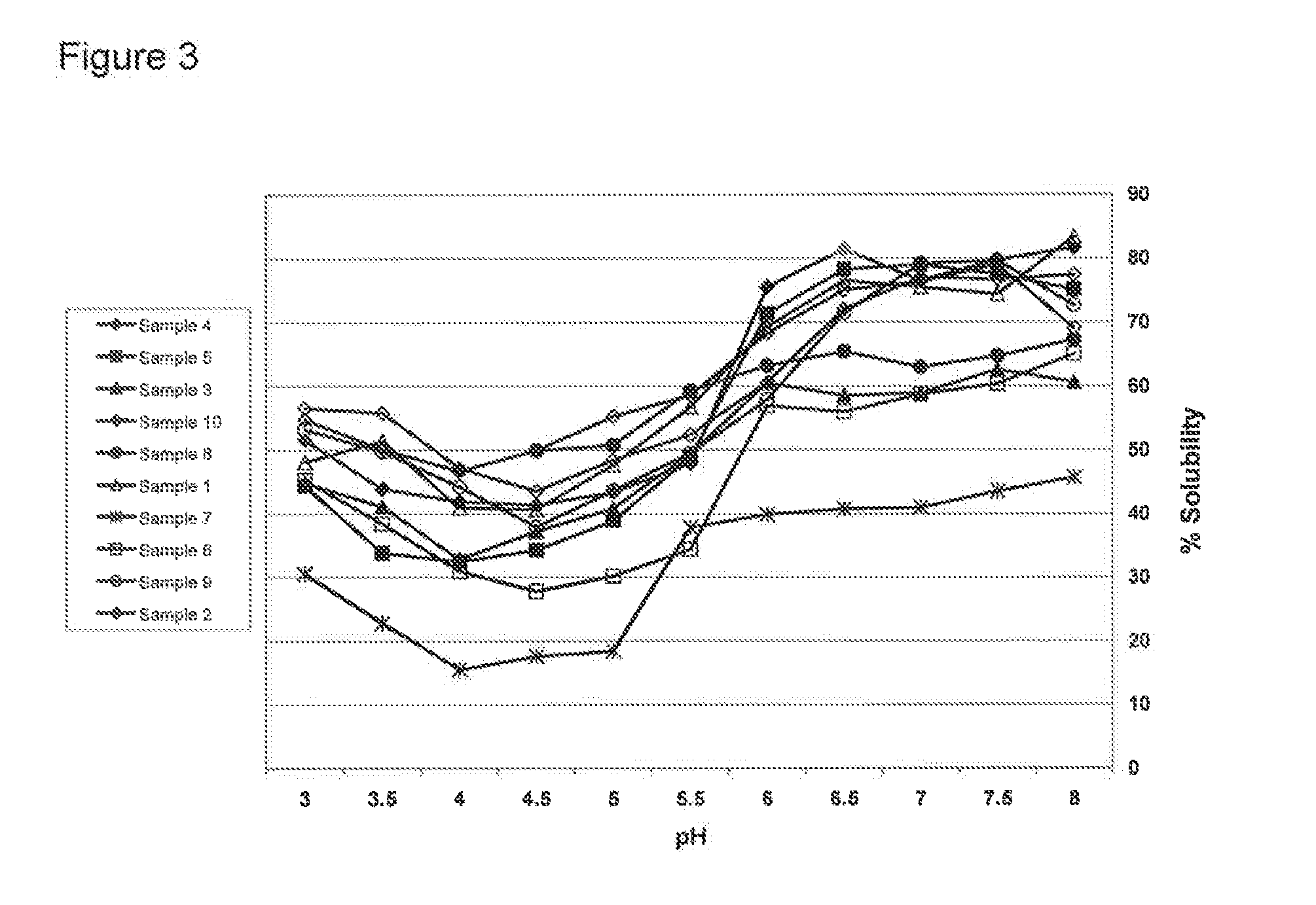Protein Hydrolysate Compositions Having Enhanced CCK and GLP-1 Releasing Activity
a technology of protein hydrolysate and glp-1, which is applied in the field of protein hydrolysates, can solve the problems of less calories consumption, and achieve the effect of promoting weight management and satiety
- Summary
- Abstract
- Description
- Claims
- Application Information
AI Technical Summary
Benefits of technology
Problems solved by technology
Method used
Image
Examples
example 1
in Hydrolysate
[0099]TL1 hydrolysates were prepared as follows. 3L of aqueous Supro® 760 isolated soy protein (ISP) protein solution at concentration of 8% solids was prepared by resuspending 240 g of protein (lot#M310007644) into 2760 g of warm tap water using moderate propeller blade mixing at room temperature. The suspension was heated to 50° C. on a hot plate, adjusted to pH 8 with 1N food-grade NaOH, and split into 4 equal 650 ml aliquots. TL1 enzyme (Novozymes NS12001) was then added to each at a final concentration of 150 mg enzyme protein / Kg solids, and the suspensions incubated at 50° C. using a Hanson Research Dissolution Station. Duplicate samples were transferred to 1L beakers at 30 and 60 minutes intervals, covered with aluminum foil, and heated to 80° C. on a hot plate. Once at temperature, the foil was removed and the heating continued for 5 minutes to inactivate the TL-1 enzyme. Finally, the hydrolysate was cooled to 40° C. using a wet ice bath, then frozen at −40° C....
example 2
[0100]Neutrase hydrolysates were prepared as follows. 1380 g of tap water was placed in a 2L beaker, then heated to 50° C. in a water bath. 120 g of Supro® 760 (lot#M310007644) ISP was then resuspended in the water with moderate stirring, and the pH of the suspension adjusted to 7 or 8.5 with 1N food-grade NaOH. Next, Neutrase® 1.5 MG (lot#PW200921) was added to the suspension to a final concentration of 75 or 150 mg enzyme protein / Kg solids, and the suspension incubated at 50° C. for 120 minutes. For some hydrolysates, pH was held constant during the hydrolysis period using a Mettler Toledo DL50 Graphix Titrator to meter in NaOH. At the end of the incubation period, the reaction was stopped by moving the beaker to a hot plate and heating the hydrolysate to 80° C. for 5 minutes. Sample was then chilled in a water and ice bath, then frozen at −40° C. and lyophilized to dryness.
example 3
ein Hydrolysate
[0101]SP-1 hydrolysates were prepared as follows. 920 g of tap water was placed in a 2L beaker, then heated to 70° C. in a water bath. 80 g of Supro® 760 (lot#P220014935) ISP was then resuspended into the water with moderate stirring, and the pH of the suspension adjusted to 9 with 1N food-grade NaOH. Next, the serine protease SP-1 was added to the suspension to a final concentration of 100 mg enzyme protein / Kg solids, and the suspension incubated at 70° C. for 30 minutes. At the end of the incubation period, the reaction was stopped by moving the beaker to a hot plate and heating the hydrolysate to 80° C. for 5 minutes. Sample was then chilled in a water and ice bath, then frozen at −40° C. and lyophilized to dryness.
PUM
| Property | Measurement | Unit |
|---|---|---|
| Fraction | aaaaa | aaaaa |
| Fraction | aaaaa | aaaaa |
| Atomic weight | aaaaa | aaaaa |
Abstract
Description
Claims
Application Information
 Login to View More
Login to View More - R&D
- Intellectual Property
- Life Sciences
- Materials
- Tech Scout
- Unparalleled Data Quality
- Higher Quality Content
- 60% Fewer Hallucinations
Browse by: Latest US Patents, China's latest patents, Technical Efficacy Thesaurus, Application Domain, Technology Topic, Popular Technical Reports.
© 2025 PatSnap. All rights reserved.Legal|Privacy policy|Modern Slavery Act Transparency Statement|Sitemap|About US| Contact US: help@patsnap.com



